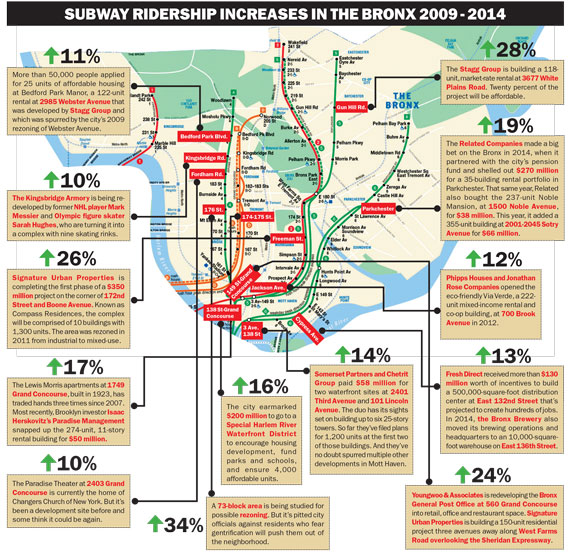Transit is a key driver of Bronx development, and subway ridership shows which neighborhoods are already benefitting from an influx of new residents and workers.
Between 2009 and 2014, overall ridership in the borough jumped 9 percent compared with an 8 percent increase citywide, according to data from the Metropolitan Transit Authority. At several stops, there were outsized gains: a whopping 34 percent increase at 176th Street on the 4 line, for example, and a 28 percent jump at Gun Hill Road on the 2/5 line.
Among real estate experts, the numbers bode well for the Bronx. “If you look at Brooklyn ridership pre-gentrification, you can start to see that certain subway stops — like Bedford in Williamsburg — saw a big spike,” said Daniel Parker, a senior vice president at Hodges Ward Elliott and a former Related Companies executive. “Now everybody that tries to ride it is jam packed.”
Not surprisingly, developers are targeting areas with the best transportation access, according to Ariel Property Advisor’s Jason Gold, an active broker in the Bronx. “The neighborhoods you see focused on,” he said, “are neighborhoods with infrastructure and public transit.” Here’s a look at where some of the ridership spikes are and the nearby projects and investment activity that might explain them.

